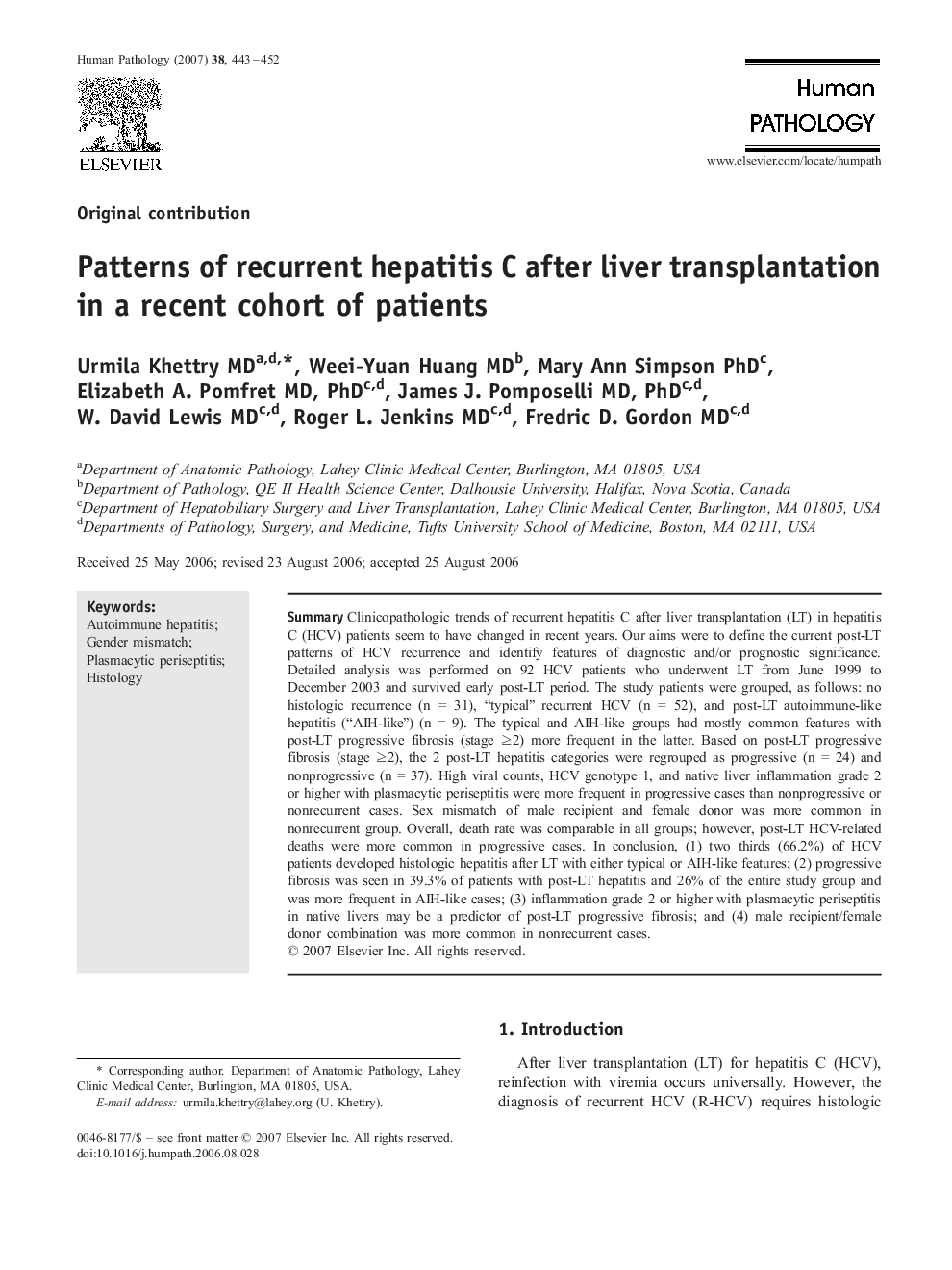| Article ID | Journal | Published Year | Pages | File Type |
|---|---|---|---|---|
| 4134966 | Human Pathology | 2007 | 10 Pages |
SummaryClinicopathologic trends of recurrent hepatitis C after liver transplantation (LT) in hepatitis C (HCV) patients seem to have changed in recent years. Our aims were to define the current post-LT patterns of HCV recurrence and identify features of diagnostic and/or prognostic significance. Detailed analysis was performed on 92 HCV patients who underwent LT from June 1999 to December 2003 and survived early post-LT period. The study patients were grouped, as follows: no histologic recurrence (n = 31), “typical” recurrent HCV (n = 52), and post-LT autoimmune-like hepatitis (“AIH-like”) (n = 9). The typical and AIH-like groups had mostly common features with post-LT progressive fibrosis (stage ≥2) more frequent in the latter. Based on post-LT progressive fibrosis (stage ≥2), the 2 post-LT hepatitis categories were regrouped as progressive (n = 24) and nonprogressive (n = 37). High viral counts, HCV genotype 1, and native liver inflammation grade 2 or higher with plasmacytic periseptitis were more frequent in progressive cases than nonprogressive or nonrecurrent cases. Sex mismatch of male recipient and female donor was more common in nonrecurrent group. Overall, death rate was comparable in all groups; however, post-LT HCV-related deaths were more common in progressive cases. In conclusion (1) two thirds (66.2%) of HCV patients developed histologic hepatitis after LT with either typical or AIH-like features; (2) progressive fibrosis was seen in 39.3% of patients with post-LT hepatitis and 26% of the entire study group and was more frequent in AIH-like cases; (3) inflammation grade 2 or higher with plasmacytic periseptitis in native livers may be a predictor of post-LT progressive fibrosis; and (4) male recipient/female donor combination was more common in nonrecurrent cases.
